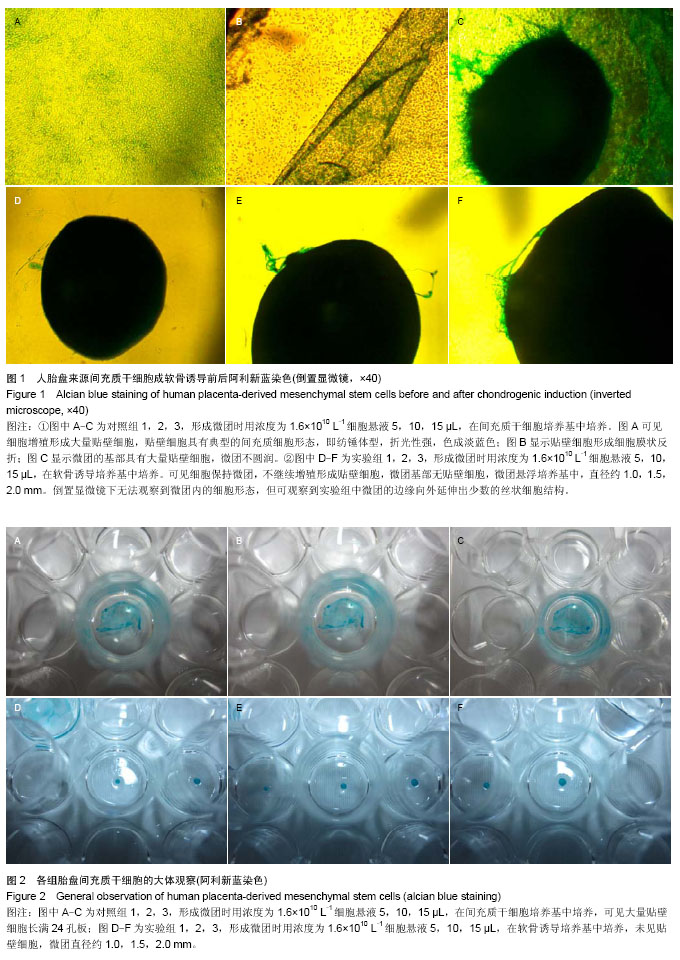| [1] Patel DM, Shah J,Srivastava AS. Therapeutic Potential of Mesenchymal Stem Cells in Regenerative Medicine. Stem Cells International. Stem Cells Int. 2013; 2013: 496218.
[2] Syková E, Jendelová P, Urdzíková L, et al.Bone marrow stem cells and polymer hydrogels--two strategies for spinal cord injury repair.Cell Mol Neurobiol. 2006; 26(7-8):1113-1129.
[3] Satija NK, Singh VK, Verma YK,et al.Mesenchymal stem cell-based therapy: a new paradigm in regenerative medicine.J Cell Mol Med. 2009;13(11-12):4385-4402.
[4] Shin M, Yoshimoto H, Vacanti JP.In vivo bone tissue engineering using mesenchymal stem cells on a novel electrospun nanofibrous scaffold.Tissue Eng. 2004; 10(1-2): 33-41.
[5] Shen J, Nair A, Saxena R, et al.Tissue engineering bone using autologous progenitor cells in the peritoneum.PLoS One. 2014; 9(3):e93514.
[6] Tuan RS, Boland G, Tuli R.Adult mesenchymal stem cells and cell-based tissue engineering. Arthritis Res Ther. 2003;5(1): 32-45.
[7] Schumann D, Kujat R, Nerlich M, et al.Mechanobiological conditioning of stem cells for cartilage tissue engineering.Biomed Mater Eng. 2006; 16(4 Suppl):S37-52.
[8] Liu YH, Vaghjiani V, Tee JY, et al.Amniotic epithelial cells from the human placenta potently suppress a mouse model of multiple sclerosis.PLoS One. 2012;7(4):1-8.
[9] Hayashi N,Takahashi K,Abe Y, et al. Placental/umbilical cord blood- derived mesenchymal stem cell-like stromal cells support hematopoietic recovery of X-irradiated human CD34~+ cells. Life Sciences. 2009; 84(17-18):598-605.
[10] Toubai T, Paczesny S, Shono Y, et al.Mesenchymal stem cells for treatment and prevention of graft-versus-host disease after allogeneic hematopoietic cell transplantation.Curr Stem Cell Res Ther. 2009;4(4):252-259.
[11] Banas A. Purification of adipose tissue mesenchymal stem cells and differentiation toward hepatic-like cells.Methods Mol Biol. 2012;826:61-72.
[12] Sacchetti B, Funari A, Michienzi S, et al. Self-renewing osteoprogenitors in bone marrow sinusoids can organize a hematopoietic microenvironment. Cell. 2007;131(2):324-336.
[13] Aziz Aly LA, Menoufy HE, Ragae A, et al. Adipose stem cells as alternatives for bone marrow mesenchymal stem cells in oral ulcer healing.Int J Stem Cells. 2012;5(2):104-114.
[14] Zhu SF, Zhong ZN, Fu XF,et al.Comparison of cell proliferation, apoptosis, cellular morphology and ultrastructure between human umbilical cord and placenta-derived mesenchymal stem cells.Neurosci Lett. 2013;541:77-82.
[15] 韩之波,王有为,王涛,等.人胎盘底蜕膜间充质干细胞的分离及其生物学特性研究[J].中国实验血液学杂志,2013,21(3):754-759.
[16] Parolini O, Alviano F, Bergwerf I,et al.Toward cell therapy using placenta-derived cells: disease mechanisms, cell biology, preclinical studies, and regulatory aspects at the round table. Stem Cells and Development.2010; 19(2): 143-154.
[17] 朱少芳,何援利,卢国辉,等.人胎盘间充质干细胞生物学特性和抗凋亡细胞因子的分泌[J].中国组织工程研究,2011,15(6): 1005-1008.
[18] 李芳,苗宗宁,许云云,等. 酶消化和整体灌注分离人胎盘间充质干细胞的比较[J].中国组织工程研究,2010,14(32):5944-5948.
[19] 张红艳,杨乃龙.胎盘来源间充质干细胞的生物学特征[J].中国组织工程究,2010,14(40):7535-7538.
[20] Miao Z, Jin J, Chen L, et al. Isolation of mesenchymal stem cells from human placenta: Comparison with human bone marrow mesenchymal stem cells. Cell Biol Int. 2006;30(9): 681-687.
[21] Wolbank S, Peterbauer A, Fahrner M,et al. Dose-dependent immunomodulatory effect of human stem cells from amniotic membrane: a comparison with human mesenchymal stem cells from adipose tissue. Tissue Eng. 2007;13(6):1173-1183.
[22] Alviano F, Fossati V, Marchionni C,et al. Term Amniotic membrane is a high throughput source for multipotent Mesenchymal Stem Cells with the ability to differentiate into endothelial cells in vitro.BMC Dev Biol. 2007;7:11.
[23] Portmann-Lanz CB, Schoeberlein A, Portmann R,et al. Turning placenta into brain: placental mesenchymal stem cells differentiate into neurons and oligodendrocytes. Am J Obstet Gynecol. 2010;202(3):294.e1-294.e11.
[24] Chang YJ, Hwang SM, Tseng CP,et al. Isolation of mesenchymal stem cells with neurogenic potential from the mesoderm of the amniotic membrane.Cells Tissues Organs. 2010;192(2):93-105.
[25] 王珂,徐建敏,华玉明,等.红景天苷诱导人胎盘间充质干细胞分化为肝细胞样细胞[J].江苏医药, 2011,37(15):1765-1767.
[26] Ventura C, Cantoni S, Bianchi F,et al. Hyaluronan mixed esters of butyric and retinoic Acid drive cardiac and endothelial fate in term placenta human mesenchymal stem cells and enhance cardiac repair in infarcted rat hearts. J Biol Chem. 2007;282(19):14243-14252.
[27] 杜莉莉,金玉楠,李昆,等.胎盘来源的间充质干细胞体外分离培养及向软骨细胞分化的研究[J].解剖科学进展,2008 ,14(1):83-86.
[28] 张钰.体外诱导人胎盘间充质干细胞分化为软骨细胞的实验研究[D].中国医科大学,2008.
[29] Richardson SM, Hoyland JA, Mobasheri R,et al. Mesenchymal stem cells in regenerative medicine: opportunities and challenges for articular cartilage and intervertebral disc tissue engineering. J Cell Physiol. 2010; 222(1):23-32.
[30] Mobasheri A, Csaki C, Clutterbuck AL, et al.Mesenchymal stem cells in connective tissue engineering and regenerative medicine: applications in cartilage repair and osteoarthritis therapy.Histol Histopathol. 2009; 24(3):347-366.
[31] Onyekwelu I, Goldring MB, Hidaka C.Chondrogenesis, joint formation, and articular cartilage regeneration.J Cell Biochem. 2009;107(3):383-392.
[32] Ramadori G, Mansuroglu T.Mesenchymal origin of hepatic stellate cells, submesothelial cells, and perivascular mesenchymal cells during mouse liver development. Hepatology. 2009;50(1):320; author reply 320.
[33] Shimomura K, Ando W, Tateishi K,et al.The influence of skeletal maturity on allogenic synovial mesenchymal stem cell-based repair of cartilage in a large animal model. Biomaterials. 2010;31(31):8004-8011.
[34] Dozin B, Malpeli M, Camardella L, et al.Response of young, aged and osteoarthritic human articular chondrocytes to inflammatory cytokines: molecular and cellular aspects.Matrix Biol. 2002;21(5):449-459.
[35] Williams JT, Southerland SS, Souza J, et al.Cells isolated from adult human skeletal muscle capable of differentiating into multiple mesodermal phenotypes.Am Surg.1999;65(1): 22-26.
[36] Sakaguchi Y, Sekiya I, Yagishita K, et al.Comparison of human stem cells derived from various mesenchymal tissues: superiority of synovium as a cell source.Arthritis Rheum. 2005; 52(8):2521-2529.
[37] Dicker A, Le Blanc K, Aström G, et al.Functional studies of mesenchymal stem cells derived from adult human adipose tissue.Exp Cell Res. 2005;308(2):283-290.
[38] Aziz Aly LA, Menoufy HE, Ragae A, et al.Adipose stem cells as alternatives for bone marrow mesenchymal stem cells in oral ulcer healing.Int J Stem Cells. 2012; 5(2):104-114.
[39] 卢国辉,张世忠,陈强,等.人胎盘底蜕膜间充质干细胞的分离培养及其多向分化潜能的实验研究[J].南方医科大学学报, 2011, 31(2): 262-265.
[40] Parolini O, Alviano F, Bagnara GP, et al.Concise review: isolation and characterization of cells from human term placenta: outcome of the first international Workshop on Placenta Derived Stem Cells.Stem Cells. 2008; 26(2):300- 311.
[41] Kadam S, Muthyala S, Nair P, et al.Human placenta-derived mesenchymal stem cells and islet-like cell clusters generated from these cells as a novel source for stem cell therapy in diabetes.Rev Diabet Stud. 2010;7(2):168-182.
[42] Sabapathy V, Ravi S, Srivastava V,et al.Long-term cultured human term placenta-derived mesenchymal stem cells of maternal origin displays plasticity.Stem Cells Int. 2012;2012: 174328.
[43] Lu GH, Zhang SZ, Chen Q, et al.Isolation and multipotent differentiation of human decidua basalis-derived mesenchymal stem cells.Nan Fang Yi Ke Da Xue Xue Bao. 2011; 31(2):262-265.
[44] Ringden O, Keating A. Mesenchymal stromal cells as treatment for chronic GVHD. Bone Marrow Transplant. 2011; 46(2):163-164. |
